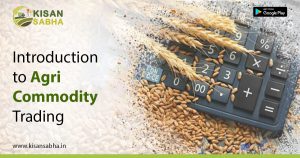During the coronavirus crisis, income support platforms must be utilized by both the state and the Centre. Social distancing should be a norm in wheat procurement mandis.
As India goes into a 21-day lockdown, the Narendra Modi government has sought to reassure an anxious public that the country has multiple times the required reserve of food grains to tide over the crisis. There have also been urgent calls for both central and state governments to ensure that the public distribution system — PDS — is fully supported to safeguard food security, especially for the millions of poor families who will be disproportionately affected by the massive closures. A few states have responded quickly, announcing a range of measures including food rations and mid-day meals to provide basic support to those who will struggle daily to survive. Their implementation will be absolutely critical.
India’s huge buffer stock, however, will not offer any protection to those farmers who are currently supplying fresh produce markets and those who are depending on returns from the rabi harvest that looms ahead. We already know that the widespread fear around the possible animal transmission of the virus, coupled with reported cases of bird flu, has led to a meltdown in the Indian poultry industry, with a steep decline in prices over the last two months. This will, in all likelihood, also depress the feed market and its constitutive commodities, especially the price of maize. For farmers in eastern Bihar, whose rabi maize starts coming into the market in large volumes in April, this is ominous news.
No buyers in mandis
Major wholesale horticultural produce markets are already contracting. Potato traders in Azadpur Mandi told researcher Shivani Gupta that they are trying to shut shop over the next two days and have asked farmers to stop sending trucks and to store whatever they can at their end. Meanwhile, they are trying to sell the stocks from some 190 trucks that have been standing in the mandi yard since Saturday. As it happens, this is the season for kaccha potatoes, which once harvested cannot be stored. But there is no public transport and few buyers. A farmer in Hoshiarpur, where Gupta spent a year doing fieldwork, told her he had 55 bags, each filled with 50 kilograms of potato, but no buyer in sight. A Haryanvi trader currently procuring lauki (bottle gourd) in Kotputli, Rajasthan has similarly been turned down by 20 arhatiya (commission agent) associations in Punjab, who are all minimising operations. Wherever possible, for seasonal produce such as mosambi (sweet lime) and oranges, traders are packing them in cold storage. Credit rotations, on which these markets run, are already breaking down.
In my field site in Harda, Madhya Pradesh, some farmers have begun harvesting their wheat, while many others will join over the next two weeks. But they are worried about what happens next. Mandis in Harda and across many market towns in Madhya Pradesh are closed at least until 3 April. Both farmers and traders are uncertain about the status of the government’s wheat procurement operations for the upcoming season. As a trader recalled today: notebandi (demonetisation) hit us at the peak of the kharif marketing season in 2016, and now coronavirus has hit just as the rabi harvest is about to arrive. The impact is likely to be severe, especially because it comes on the back of long-term agrarian distress.
Supply chains and social distancing
This calls for urgent action and innovation. First, farmers (landed and landless) and agricultural laborers need to be included in the economic relief and income support measures that the center and state governments are working out. Both the Centre and the states have developed Direct Benefit Transfer (DBT)/income support platforms for agriculturalists, and these must now be utilised. At the same time, it is also critical for us to think quickly and collectively about how we can support and protect our vast, interconnected agricultural production and marketing system so that it can keep moving as fairly and as safely as possible for India to attempt to stand still.
What should public procurement look like during a pandemic? When wheat procurement starts next month, we will need to streamline and manage the flow of arrivals into mandis and procurement centers in line with protocols for social distancing. For those familiar with these marketplaces, this may sound highly unrealistic. Major mandis are usually packed to the brim and overflowing during peak season and the pile-ups are especially high whenever there is uncertainty about market closures and public procurement windows. But states such as Madhya Pradesh have used SMS-based pre-registration systems fairly successfully in the past to try to regulate arrivals and manage logistics and these will now need to be deployed and further strengthened.
Communication needs to be very clear and consistent so that farmers do not flood market sites for fear of closure. Payments will also need to be processed quickly. Each step of exchange and transfer – sampling, auctions, weighing, and payment – can be reviewed to minimize crowding and contact.
In the upcoming season, we need to quickly plan ahead to better utilize and enhance storage and warehousing facilities and ensure more transparent inventory management so that farmers, in particular, may benefit from such action. This means getting credit and financing systems in place and working out strategies to urgently step up support to well-functioning Farmer Producer Organisations (FPOs). We also need to ensure that transportation networks enable the timely and safe movement of food. A significant proportion of agricultural produce, especially fresh produce, moves daily—locally and regionally—via public transport. If these systems remain closed for long, alternative and accessible transportation options will need to be made available.
Strengthen local food systems
Finally, we will need to focus on both public and private food distribution systems and ensure that they work as equitably as possible. Historically, in times of crisis, food markets become explosive sites for the expression of public fear, anger, and aggression. Reports of widespread consumer panic and the stockpiling of food and household provisions from New York to New Delhi tell us that this time is unlikely to be different. But, at least in some places, there is also much-needed recognition of the essential services that grocers provide every day.
For instance, the governments of Minnesota and Vermont in the United States have classified grocery clerks as ‘emergency workers’, entitling them to state-funded childcare services and other benefits so that they can continue to serve in stores. We need to think about our own vast, largely informal networks of traders, wholesalers and retailers and take concrete steps to support them as they keep working during shutdowns. This period of social distancing and border closures may also be precisely the time to strengthen local food systems, reducing the distance between production and consumption wherever feasible.
The latest novel coronavirus pandemic may well be the result of our insatiable appetite and extraordinary capacity for the commodification of non-human life. And perhaps at the end of this crisis, we will be forced to truly consider what this means for the future. In the meantime, we need to take urgent and immediate steps to ensure that our agricultural commodity markets—and the millions of lives and livelihoods that depend on them—are secured and supported to the greatest extent possible.



